Benjamin Franklin first envisioned airborne troops dropped by parachute from hot air balloons flying behind enemy lines in a 1784 letter, “And where is the Prince who can afford so to cover his Country with Troops for its Defense, as that Ten Thousand Men descending from the Clouds, might not in many Places do an infinite deal of Mischief, before a Force could be brought together to repel them?”
The first modern airborne operation was planned not for World War II, but for World War I, when Maj. Lewis H. Brereton and Brig. Gen. Billy Mitchell proposed dropping 1st Division soldiers near Metz, but the war ended before the effort was organized.
In 1942, the 82nd Division was renamed the 82nd Airborne Division, became the first airborne division in the U.S. Army, and located at Fort Bragg, N.C. A few months later, Gen. George Marshall brought some dignitaries to visit. A year before, Marshall had visited airborne demonstrations on Salisbury Plain in England, not far from Stonehenge, accompanied by none other than Prime Minister Churchill, referred to as “Former Naval Person” by Marshall in a letter to President Roosevelt.
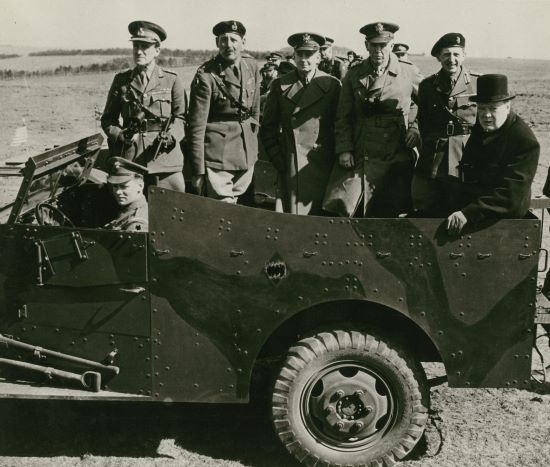
Gen. Marshall with Prime Minister Winston Churchill at an airborne demonstration in England.
During this period of time, discussion was underway about what an invasion of Europe, codenamed ROUNDUP, would look like for 1943. Gen. Eisenhower spoke of a six-division front with airborne support that would take and hold a beachhead, allowing for a flow of men and materiel.
There were also plans to use airborne troops during Operation HUSKY, the invasion of Sicily which was scheduled for the summer of 1943 (and would become the first U.S. airborne assault). The airborne troops were so important to this operation, there was discussion from Marshall to Eisenhower about scheduling: the “proposal from your theater that operation must be carried out on moonlight night to facilitate employment of parachute troops. It seems to me we may be jeopardizing entire affair because of expressed desire of parachutists. General Lee feels that while the moonlight condition is desirable it is not mandatory.
Please let me have your personal view.”
So the visit to Fort Bragg in March, 1943 was much more important than a show that American paratroops were as good as their British counterparts. This visit was really to determine whether these new soldiers would be ready to be deployed to fight.
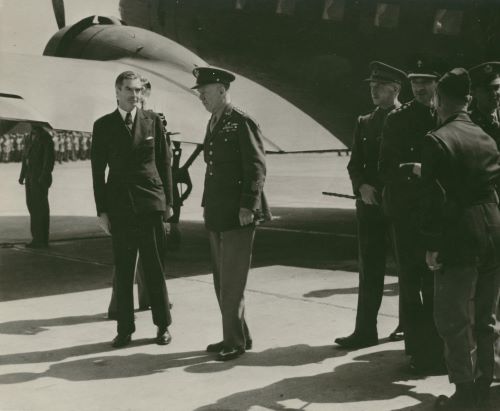
Secretary Anthony Eden, Gen. George Marshall, and Field Marshal John Dill on the tarmac at Pope Field, adjacent to Fort Bragg, N.C.
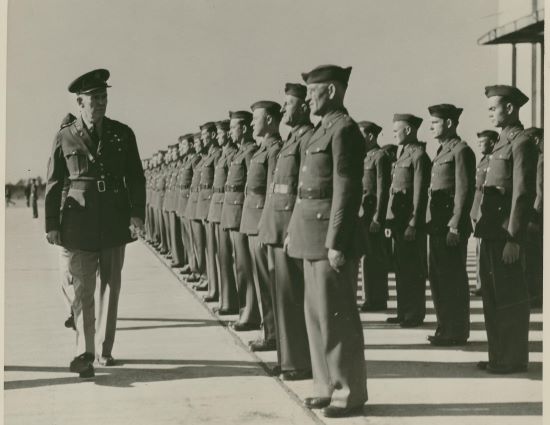
Gen. Marshall reviewing the troops.
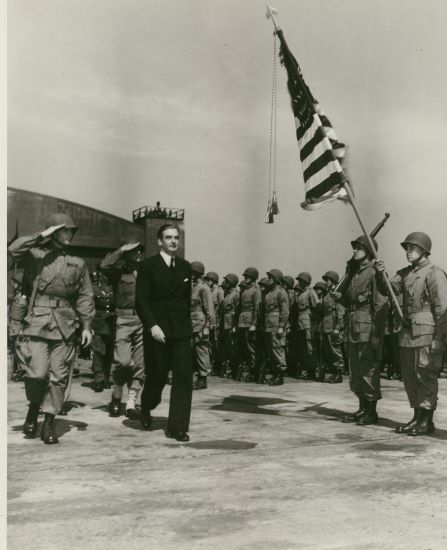
Secretary Eden reviewing the airborne troops. They are wearing the traditional Corcoran jump boot, still considered the best jump boot available.
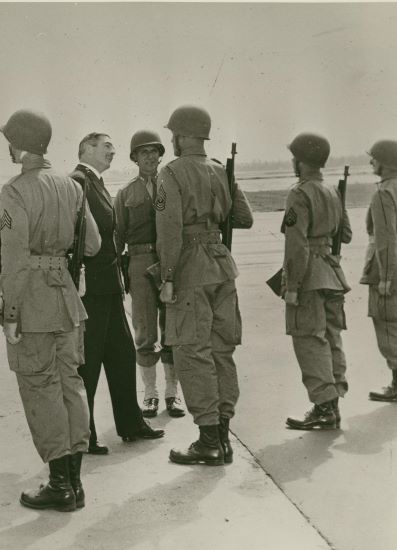
Secretary Eden, accompanied by Maj. Gen. Matthew Ridgway, commander of the 82nd, stops to speak with a First Sergeant during the review.
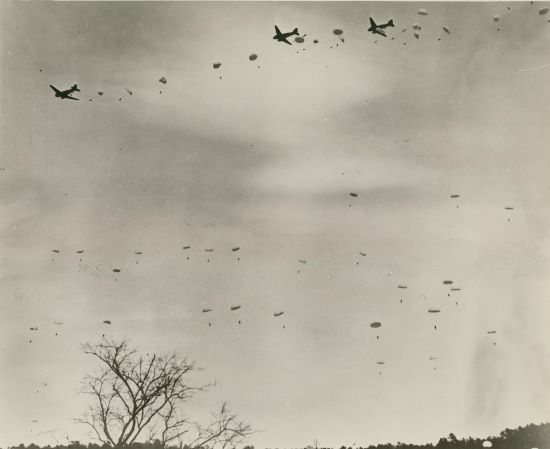
Airborne soldiers exiting the doors of their C-47s. The round parachutes used here, with small modifications, were the primary Army parachute for 60 years.
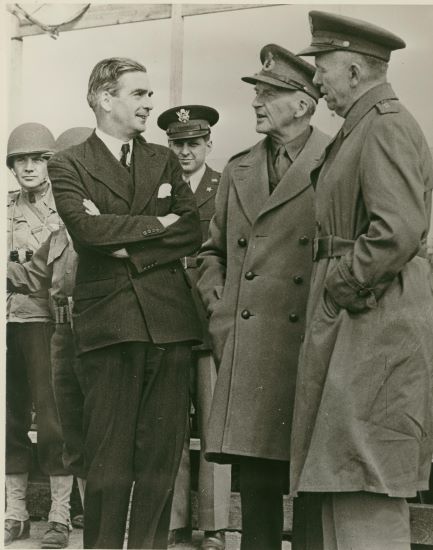
Secretary Eden, Field Marshal Dill, and Gen. Marshall discuss the airborne demonstration.
The judgement that the the airborne troops’ training and preparation was sufficient led to airborne soldiers to participate in Operation HUSKY; and approximately 17,000 in Operation NEPTUNE, the invasion of Europe; and more than 35,000 paratroops jumped in Operation MARKET GARDEN, the largest airborne operation in history.
Melissa has been at GCMF since Fall 2019, and previously was an academic librarian specializing in history. She and her husband, John, have three grown children, and live in Rockbridge County with three large rescue dogs. Keep up with her @life_melissas.
